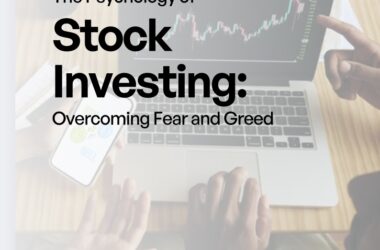Ever seen a stock price shoot up rapidly for no obvious reason? It might be a short squeeze at play. As an investor, you don’t need to be caught off guard. Understanding how short squeezes work can help you make smarter decisions and avoid unnecessary risk.
To understand a short squeeze, you first need to grasp short selling. It’s when you borrow and sell a stock hoping its price will drop. If it does, you buy it back cheaper and keep the difference. But if the price rises instead, you’re forced to buy it back at a loss.
In this blog, I’ll break down what a short squeeze is, how it works, what causes it, and what you should watch out for before getting involved.
What is a Short Squeeze?
A short squeeze happens when a heavily shorted stock’s price suddenly starts rising instead of falling.
As the price climbs, short sellers start panicking. To limit their losses, they begin buying back the stock to close their positions. But that buying pushes the price up even more, triggering more short sellers to buy back in.
What Triggers a Short Squeeze?
Not every price jump is a short squeeze. For one to happen, a few things usually need to be in place:
- High Short Interest
This means a large percentage of a company’s available shares have been sold short. It shows that many investors are betting against the stock.
- Limited Supply (Low Float)
If there aren’t many shares available to buy (known as a low float), then any increase in buying demand, especially from short sellers rushing to cover, can send prices soaring.
- Sudden Positive Momentum
Sometimes it’s good news, a market rumour, or just social media hype. Regardless of the reason, once the price starts climbing, it can trigger fear among short sellers, leading to a rush to exit.
- Lack of Liquidity
If there aren’t enough sellers willing to offload shares, short sellers may struggle to find someone to buy from. That drives up the price even faster.
How to Spot a Potential Short Squeeze
You don’t need to be a professional trader to keep an eye out for a possible short squeeze. Here are some tools and metrics you can check:
- Short Interest Ratio
This shows how many shares are currently sold short compared to the total available. A short interest above 20% is considered very high.
- Volume Spikes
A sudden increase in trading volume, especially with upward price movement, could be an early sign of a squeeze starting.
- News and Catalysts
If a heavily shorted stock suddenly announces good news (a product launch, earnings surprise, etc.), it could light the fuse.
Even with all these signs, remember: predicting a short squeeze is not an exact science. It’s a risky play that requires timing, speed, and a clear exit plan.
Why This Matters for Everyday Investors
Even if you’re not trading short squeezes, they can still affect your portfolio. A short squeeze can distort market signals, inflate stock prices temporarily, and add unnecessary noise to your investment decisions.
That’s why it helps to understand the mechanics. You don’t want to mistake a squeeze-driven rally for genuine long-term growth. By staying informed, you can avoid getting swept up in the hype.
Conclusion
A short squeeze is one of the market’s most dramatic events. It’s exciting to watch, risky to trade, and important to understand. As an investor, your best defence is knowledge.
Now that you know what a short squeeze is and how it works, you’re better equipped to spot the signs, steer clear of emotional trading, and stay focused on your long-term goals.



